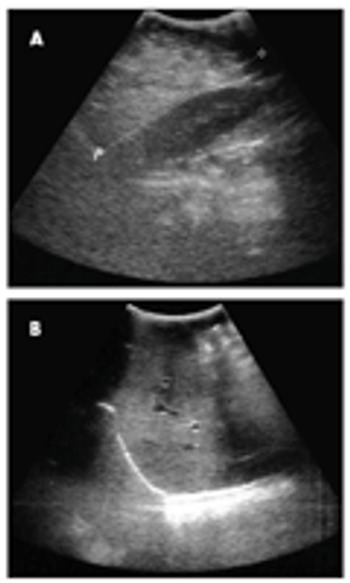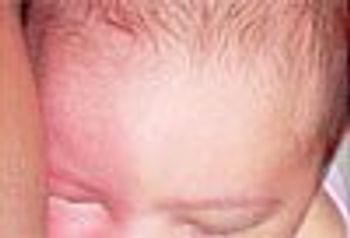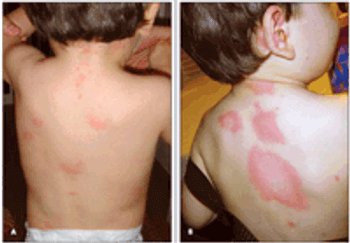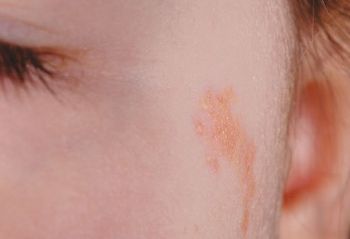
A 3-year-old boy with white patches on the trunk first noticed shortly after birth.

A 3-year-old boy with white patches on the trunk first noticed shortly after birth.

A 17-year-old girl presented for evaluation of right hip pain. Several months earlier she had incurred a twisting injury to her hip when she landed from a jump while dancing.

Sometimes it is difficult to determine whether a testicle is fully descended.

When I repair facial lacerations on toddlers, I find that they are likely to start pulling at the bandage as soon as I put it on.

A 6-month-old boy was hospitalized because of fever and suspected central line sepsis. He had been receiving total parenteral nutrition (TPN) since shortly after birth following a small-bowel resection, which was performed to repair a midgut volvulus. Abdominal ultrasonographic findings after the procedure were normal. The infant was born at term after an uneventful pregnancy and delivery. Alkaline phosphatase and γ-glutamyl transpeptidase levels were elevated, without hyperbilirubinemia. An ultrasonogram showed hyperhomogeneous and nonhomogeneous echogenicities of the liver, consistent with fatty changes and fibrosis.

Episodic right-sided facial flushing was noted in a 2-month-old girl born at full term via forceps-assisted vaginal delivery. The erythema appeared within minutes of latching onto her mother’s breast and resolved within 5 to 10 minutes after breastfeeding. The episodes of flushing had begun a week before the clinic visit; there were no collateral symptoms of anaphylaxis. Because food allergy was suspected, the mother had eliminated all dairy products from her diet.

A 7-year-old boy was brought for evaluation of a nonpruritic, nonpainful, evolving polymorphic rash that began on the torso and spread to the extremities, face, palms, and soles over a 2-week period. He had been otherwise healthy and had no history of constitutional symptoms.

Circumscribed erythematous lesions developed on the back and abdomen of this 19-month-old boy. The rash was mildly pruritic. The parents gave the child 1 dose of diphenhydramine, and the rash resolved after an hour. About 12 hours later, new lesions developed on the face, neck, and upper back. The child was given the same treatment and the symptoms resolved. The following morning, widespread lesions were noted on the child's face, neck, trunk, and extremities.

Distinguishing properly between a syndrome and a sequence emphasizes the fact that anomalies can be either multiple and independent (syndrome) or related to one embryological event (single entity or sequence).

The parents of this 6-year-old girl expressed concern about a yellow-brown arciform plaque on their daughter's cheek that has been present since birth. Although it has remained stable throughout her early childhood, her parents wonder whether it may become cancerous later on. Would you recommend removing the lesion?

The readiness of a child with a developmental disability to begin toilet training is determined by his or her achievement of the requisite developmental milestones rather than by chronological age. The specific strategies used in training are determined by the child's specific diagnosis.

Although it has been more than 40 years since Kawasaki disease was first described, it is still something of a medical mystery.